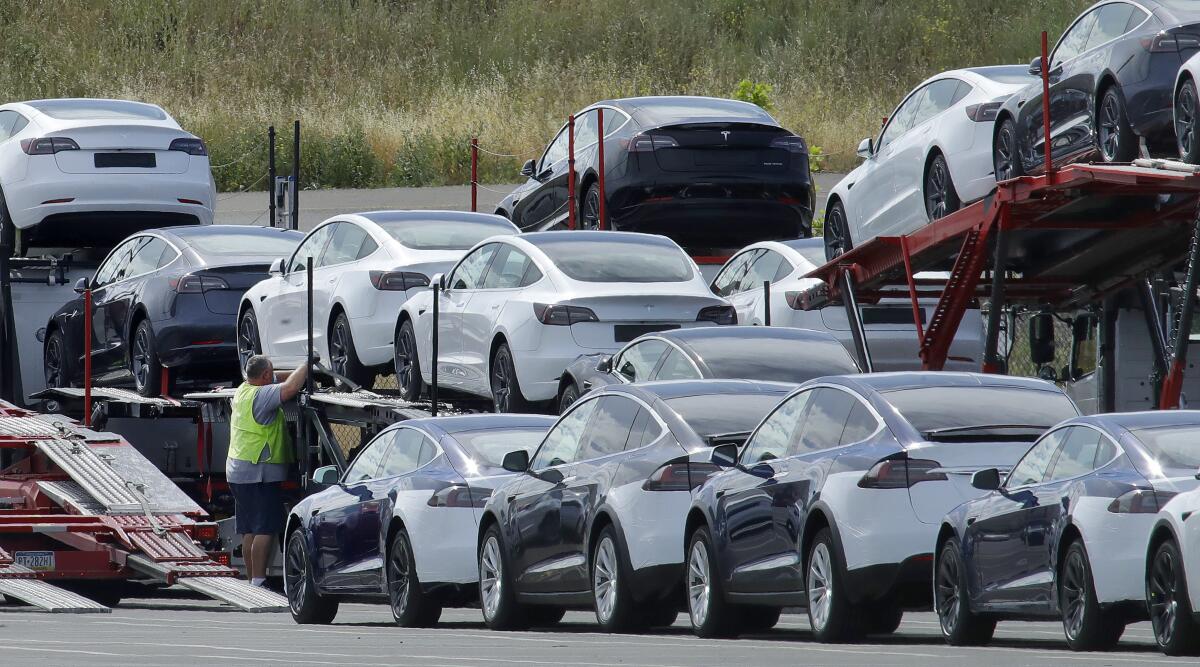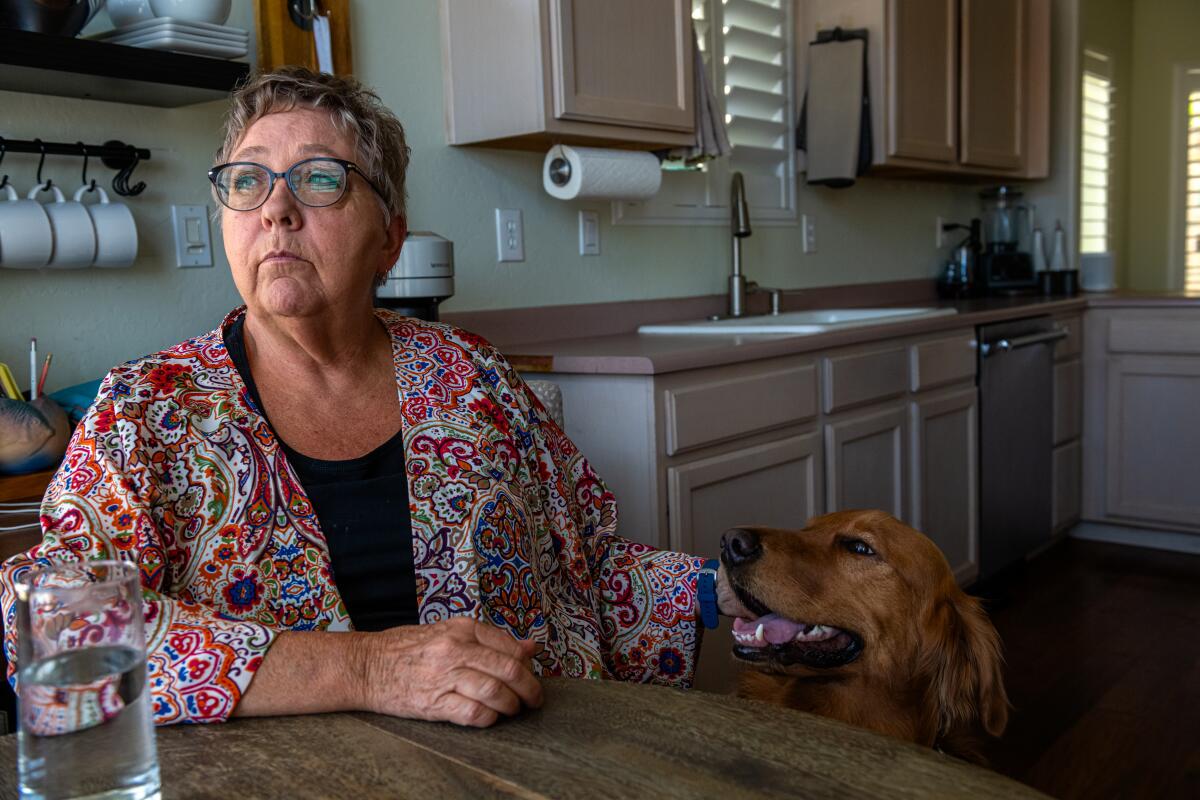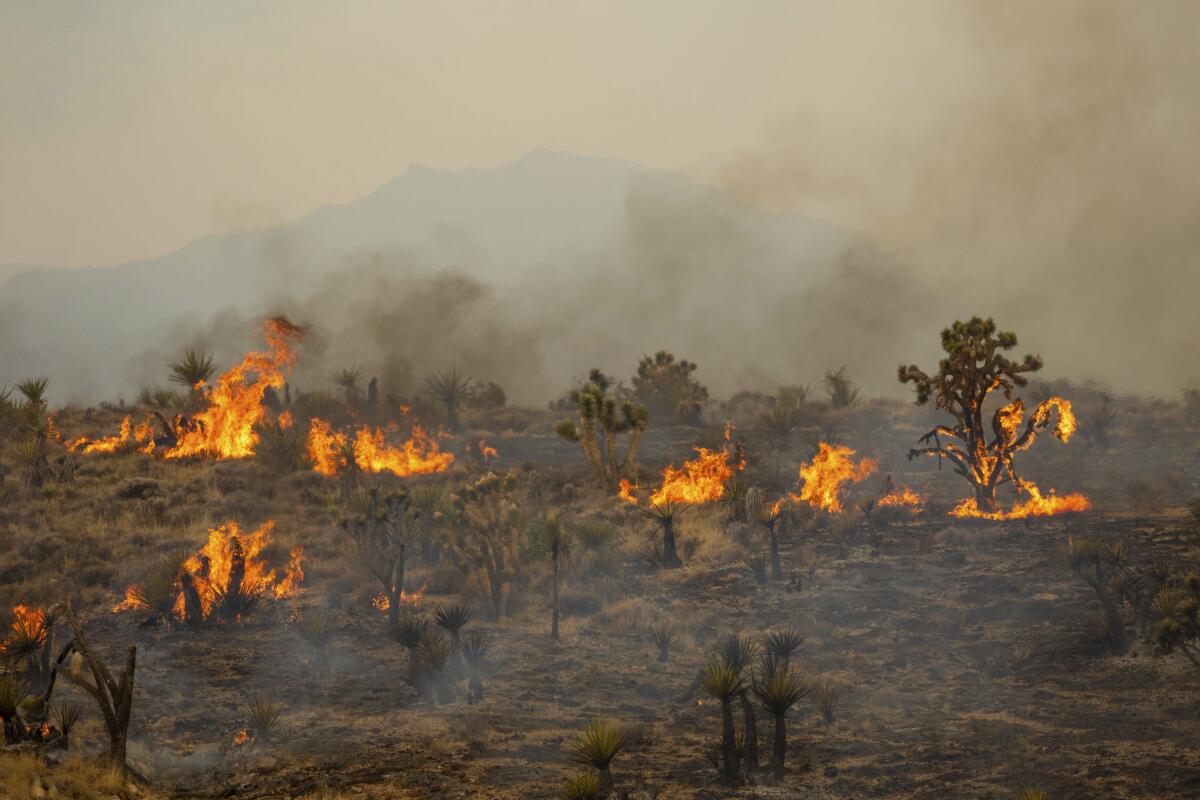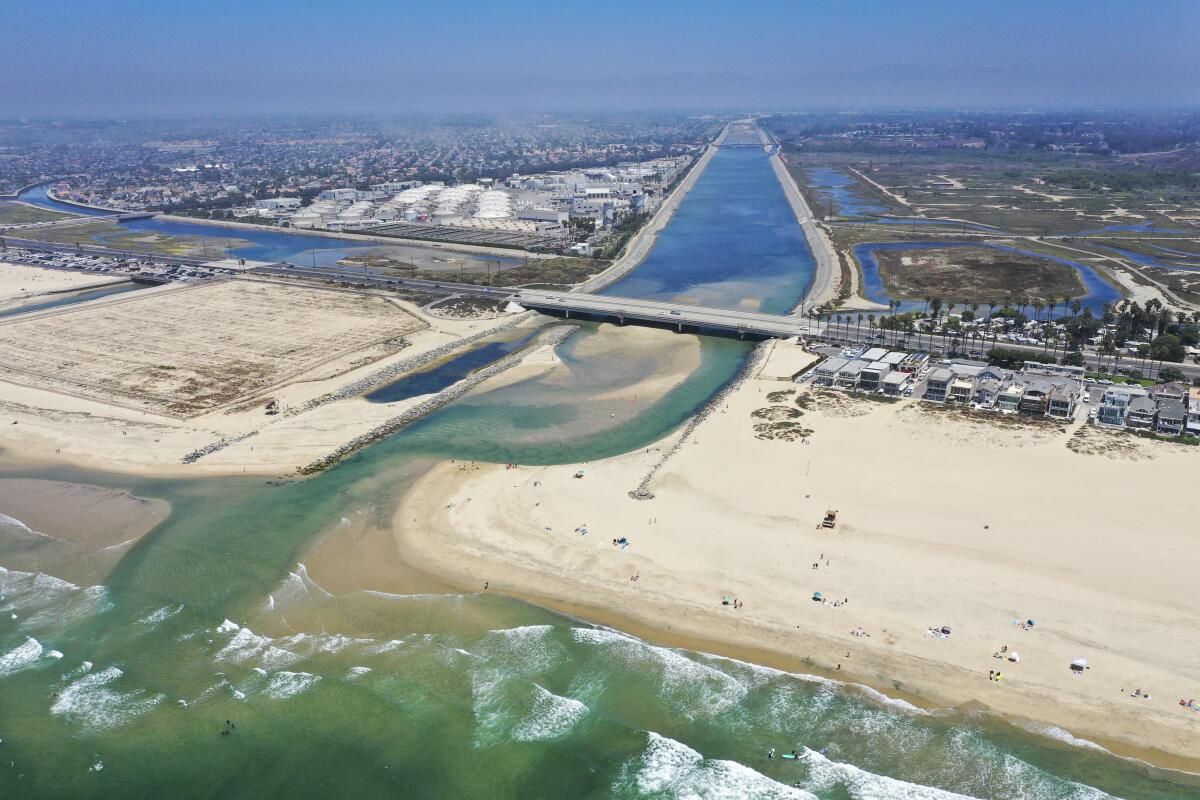Boiling Point: Some good news, for once

This story was originally published in Boiling Point, a newsletter about climate change and the environment. Sign up here to get it in your inbox.
Let’s start with some good news for a change.
Twenty-five percent of all vehicles sold in California during the second quarter of 2023 were electric or otherwise zero-emission, The Times’ Vanessa Arredondo reports. That’s a record, and up from 19% in the first quarter of the year.
Yes, electric cars can still do environmental damage. Their batteries use lithium and other minerals that are often extracted from pristine or sacred lands; the vehicles’ manufacture and transport can pollute the air; and they ultimately draw on an electric grid that gets a lot of its juice from fossil fuels, at least for now.
To the extent we can get around through means other than personal vehicles, even better. I loved this piece by my colleague Ryan Fonseca, who took public transit to one of Taylor Swift’s SoFi Stadium concerts to ask Swifties why they love trains and buses so much, and to explore how the L.A. Metro system can improve. (If you’ve got SoFi tickets either of the next two nights, here’s how to get there via transit, courtesy of The Times’ Jon Healey.) I also enjoyed this story by Arredondo about Long Beach becoming the latest California city to launch a program to get electric bikes to people who might not otherwise be able to afford them.
All that said, there’s no avoiding the reality that cars and trucks will continue to be central to many of our lives — at least without unprecedented social and political change that sees hundreds of millions of people radically shift their values.
So the more people who start driving electric, the better. If you don’t agree with that statement, I’d encourage you to read some of the climate horror stories below. As I’ve been saying a lot recently, there are no perfect climate solutions.
Without further ado, here’s what’s happening around the West:
TOP STORIES

As Phoenix endured 31 straight days at or above 110 degrees, an older woman’s air conditioning stopped working — and for parts of three days, she and her dog suffered through potentially deadly heat. The Times’ Jack Herrera wrote about her harrowing experience, including the repairman who showed up just in time to save her life. (A recent study found that if Arizona sees a prolonged blackout combined with a multiday heat wave, more than 13,000 people could die.) If you’re looking to avoid a similar fate, my colleague Jon Healey has a great rundown on expensive-but-valuable options for keeping your home powered during a blackout, including batteries, rooftop solar panels, portable power stations, diesel generators and electric vehicles.
President Biden is planning to protect 1.1 million acres around the Grand Canyon from uranium mining. So reports the Arizona Republic’s Brandon Loomis, who writes that Biden will establish the Baaj Nwaavjo I’tah Kukveni Grand Canyon National Monument — as urged by Indigenous tribes and environmental activists — on Tuesday during a trip to Arizona. Biden will use the trip to tout his work on climate change and clean energy, the Associated Press’ Chris Megerian reports. In other conservation news, my colleague Cari Spencer reports that a collection of giant redwoods in Northern California’s Sonoma County — including one tree thought to be about 2,000 years old — are set to be protected from logging in a $6.5-million purchase by the Save the Redwoods League. The group has until the end of September to raise the money and complete the purchase.
Plastic-free Barbies would be awesome — but at least for now, they’re not in the cards. The Times’ Tony Briscoe wrote about a fascinating fake ad campaign designed to shame Mattel into making dolls out of materials less harmful to human health and our planet’s climate. (Plastics are generally derived from oil.) The hoax was backed by actor Daryl Hannah and built on research finding that the production and transportation of Barbie dolls generates as much planet-warming pollution each year as burning 381 million gallons of gasoline. If you’re looking for other places in your life to help reduce carbon pollution, my colleague Sonja Sharp wrote about how cardboard became so pervasive in human society, from packaging to Pogs to tampons.
WATER IN THE WEST

What’s in the mysterious, rapidly receding waters of California’s Tulare Lake, which roared back to life after last winter’s storms? L.A. Times reporter Melissa Gomez and photographer Robert Gauthier went out on an airboat to see for themselves. “Ducks, egrets and other waterfowl have flocked en masse to its dusty shores,” Gomez writes. “Frogs wade on the water’s edge, diving in at the slightest movement. Tule grass sprouts along the shoreline. As Tulare Lake reclaims its historic footprint in the lowlands of the San Joaquin Valley, long-forgotten ecosystems have been revived.” Columnist Patt Morrison, meanwhile, offered a broader tour of California’s suddenly-undead lakes, from the Mojave Desert to the Owens Valley.
There are tons of forever chemicals in household water wells by the San Luis Obispo County airport — and although government officials have an agreement clean them up, local residents worry it won’t be enough. My colleague Ian James talked with families whose water is contaminated with PFAS, which has been linked to high cholesterol, high blood pressure, kidney cancer, testicular cancer, thyroid issues and damage to the liver and the immune system. Farther north, Siskiyou County repealed ordinances that critics said targeted Hmong and other Asian American cannabis growers, Christian Martinez reports.
Could waves and tides play a role in California’s clean energy future? A bill proposed in the state Legislature could help prod those technologies toward widespread adoption, directing state agencies to study the feasibility of using ocean water to generate climate-friendly electricity, KQED’s Holly McDede reports. As California looks for more ways to phase out fossil fuels on the electric grid, the operators of gas-fired power plants continue to push carbon capture as a solution. The Sacramento Bee’s Ari Plachta dug into a pilot project at a Bay Area gas plant, where Calpine Corp. is trying to prove the concept. Plachta cites my previous reporting showing that federal research supporting carbon capture was funded in part by a dark-money group with ties to another energy company that stands to benefit if California incentivizes the technology.
POLITICAL CLIMATE
In the latest example of California’s bizarre referendum process, there might be two measures on the November 2024 ballot asking whether the state should ban new oil and gas wells within 3,200 feet of homes. One of those measures is backed by environmental groups, the other by oil companies — and critics say the industry-backed measure might confuse people into voting “no” instead of “yes,” The Times’ Taryn Luna reports. Consumer Watchdog, meanwhile, is looking to get an initiative on the ballot that would strengthen the California Public Record Act, my colleague Mackenzie Mays writes. The group has made its case in part by citing the California Public Utilities Commission’s resistance to releasing wildfire records.
Seven years after Monterey County residents voted to ban new oil and gas wells, the California Supreme Court rejected the ban. The justices ruled that regulating certain aspects of fossil fuel production is a task for the state, not the county, Sophie Austin reports for the Associated Press. Separately, Gov. Gavin Newsom continued his efforts to rein in high gasoline prices by appointing the state’s first oil czar to watch for price gouging, the Sacramento Bee’s Grace Scullion and Maya Miller write. In related news, one of the companies benefiting from high gas prices — ConocoPhillips — lost a board member last week, when Harvard University environmental law professor Jody Freeman resigned from the board after months of pressure from climate activists, who saw her role at ConocoPhillips as a conflict of interest. Details here from the Guardian’s Dharna Noor.
The Los Angeles City Council unanimously approved a major renovation of the L.A. Zoo, despite a litany of environmental concerns raised by the Santa Monica Mountains Conservancy and Friends of Griffith Park. Critics say the renovations — planned ahead of the 2028 Summer Olympics — would cut into the surrounding hills, destroying wildlife habitat, my colleague Dakota Smith reports. Smith also wrote about a proposal being weighed by City Council that would limit further development of mega-mansions in the Santa Monica Mountains, which supporters say would help preserve wildlife habitat.
AROUND THE WEST

California’s eastern Joshua trees were supposed to be more resilient to climate change than the western variety, which recently received new protections under state law. But now wildfire is laying siege to the eastern subspecies, with the 93,000-acre York fire raging through their habitat, The Times’ Grace Toohey and Hayley Smith report. “I can say with the utmost certainty that the areas that burn — whether it’s Joshua trees or other plants — will never look the same in the next couple of generations, if not longer,” ecologist James Cornett said. In other tragic wildfire news, two helicopters battling a small blaze in Riverside County collided on Sunday night, killing three people, my L.A. Times colleagues report.
With support from California climate regulators, a timber company got paid millions of dollars by Microsoft and other companies to slow its logging on 570,000 acres in Oregon — only to see much of that land burn, sending heat-trapping carbon emissions into the atmosphere. Here’s the story by Hal Bernton for Oregon Public Broadcasting, which serves as the latest reminder that carbon-offset programs such as California’s — through which some corporations claim to cancel out the climate consequences of their emissions — are far from guaranteed to slow the heating of the planet.
With a return to dry conditions following a rainy winter, Southern Californians are at especially high risk of contracting valley fever this summer. The health condition is caused by breathing in dust that contains a certain fungus, and it can result in a month or more of chest pain, cough, fever and fatigue, my colleague Summer Lin writes. In other not-great news, eight people in the U.S. have contracted malaria from local mosquitoes — the first such cases in two decades, and potentially a symptom of the climate crisis, Victoria St. Martin reports for Inside Climate News.
ONE MORE THING

I was at a close friend’s wedding over the weekend, and I was touched by a beautiful “water ceremony” created by the bride and groom to express the important role water has played in their lives — and the role it plays in bringing us all together.
Just before reading their vows, the couple clasped hands in a bowl filled with water from the rivers where they grew up — the Allegheny in western Pennsylvania, and the Santa Ana in Southern California — and pledged to combine the waters of their lives, like two rivers reaching a confluence.
It was a lovely symbol of commitment and partnership, and a reminder that all of us — whether we’re focused on it or not — hail from natural watersheds that make life possible and need to be kept safe.
We’ll be back in your inbox Thursday. To view this newsletter in your Web browser, click here. And for more climate and environment news, follow @Sammy_Roth on Twitter.
Toward a more sustainable California
Get Boiling Point, our newsletter exploring climate change, energy and the environment, and become part of the conversation — and the solution.
You may occasionally receive promotional content from the Los Angeles Times.




